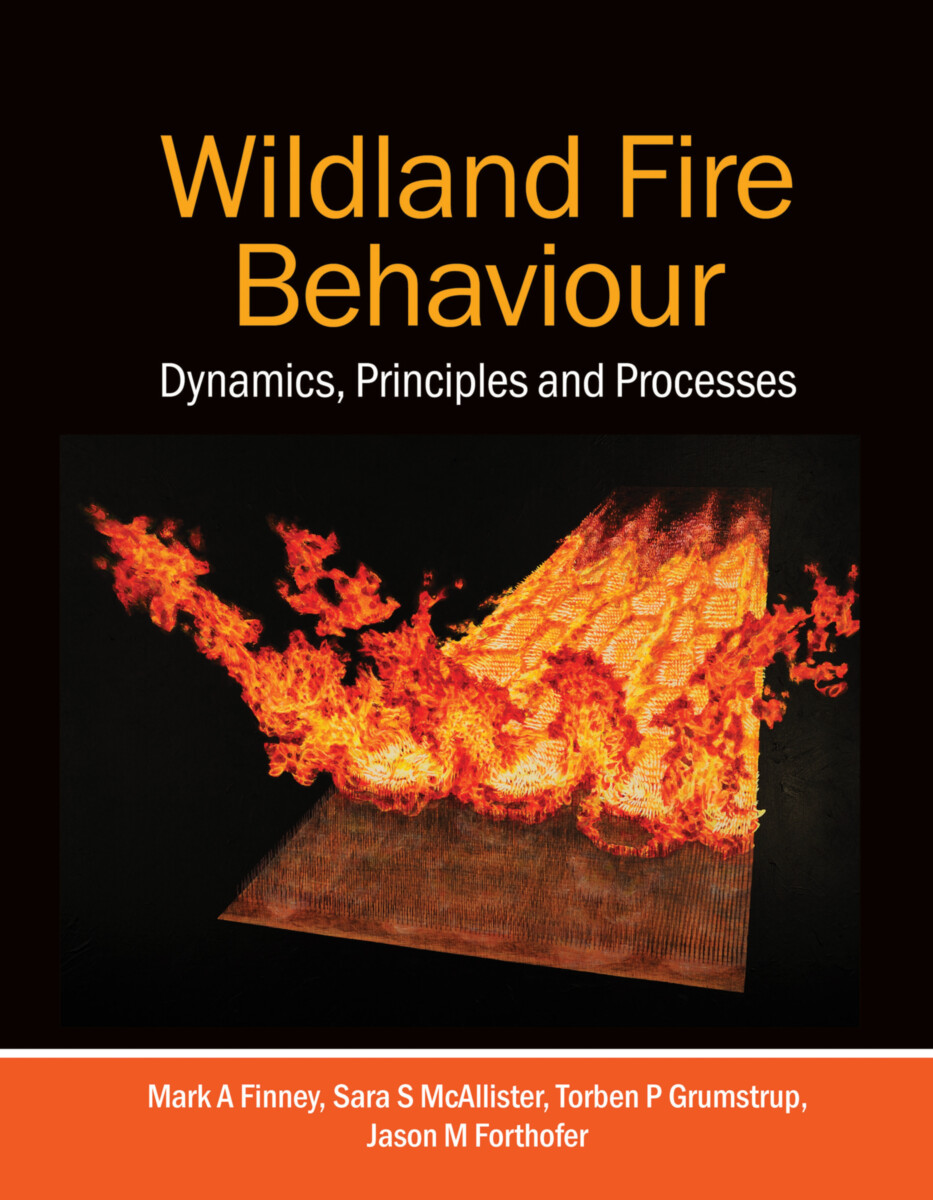EXCELLENCE IN SCIENCE PUBLISHING
Wildland Fire Behaviour
Dynamics, Principles and Processes
- Publisher
CSIRO Publishing - Published
4th November 2021 - ISBN 9781486309085
- Language English
- Pages 376 pp.
- Size 8" x 11"
- Images 91 illus, 72 graphs, 29 color photos, 4 black & white photos
Wildland fires have an irreplaceable role in sustaining many of our forests, shrublands and grasslands. They can be used as controlled burns or occur as free-burning wildfires, but can also be dangerous and destructive to fauna, human communities and natural resources. Through scientific understanding of their behavior, we can develop the tools to reliably use and manage fires across landscapes in ways that are compatible with the constraints of modern society while benefiting the ecosystems.
The science of wildland fire is incomplete, however. Even the simplest fire behaviors – how fast they spread, how long they burn and how large they get – arise from a dynamical system of physical processes interacting in unexplored ways with heterogeneous biological, ecological and meteorological factors across many scales of time and space. The physics of heat transfer, combustion and ignition, for example, operate in all fires at millimeter and millisecond scales but wildfires can become conflagrations that burn for months and exceed millions of hectares.
Wildland Fire Behaviour: Dynamics, Principles and Processes examines what is known and unknown about wildfire behaviors. The authors introduce fire as a dynamical system along with traditional steady-state concepts. They then break down the system into its primary physical components, describe how they depend upon environmental factors, and explore system dynamics by constructing and exercising a nonlinear model. The limits of modelling and knowledge are discussed throughout but emphasized by review of large fire behaviors. Advancing knowledge of fire behaviors will require a multidisciplinary approach and rely on quality measurements from experimental research, as covered in the final chapters.
Features:
- Approaches wildland fire behavior as the product of a dynamical system rather than as a steady-state property of fuels, topography and weather
- Introduces and applies the physical principles of heat transfer, combustion and ignition to the wildland fire context
- Explores dynamical fire behaviors using a simplified model of wildfire spread
- Surveys the state of knowledge of large wildfire behavior
- Summarizes methods for studying fire behaviors at laboratory and field-scales
Foreword
Preface and acknowledgements
About the authors
Nomenclature
1: Introduction to wildfire science
2: Fire and wildland fire behaviour
3: Thermodynamics, fluid mechanics and heat transfer
4: Combustion
5: Ignition
6: The environment in wildfire dynamics
7: Wildfire spread
8: Behaviours of large fires
9: Measurements in fire behaviour
10: Ignition techniques for experimental burning
11: Conclusions
Appendix A: Physical quantities and units
Appendix B: Thermal and physical properties of air
Index
Mark A. Finney
Dr. Mark A. Finney is a Senior Scientist and Research Forester. He began his career as a seasonal wildland firefighter with the Bureau of Land Management and worked as an ecologist for Sequoia National Park before joining the U.S. Forest Service at the Missoula Fire Sciences Laboratory. His research has involved fire history and ecology, prescribed burning, modelling of fire growth, landscape fuel treatment design, wildfire risk analysis, and laboratory and field experiments on the physics of wildland fire behavior.
Sara S. McAllister
Dr. Sara S. McAllister is a Research Mechanical Engineer for the U.S. Forest Service at the Missoula Fire Sciences Laboratory. She earned her PhD in Mechanical Engineering from the University of California, Berkeley, where she studied material flammability in spacecraft and co-authored a textbook on combustion fundamentals. Her current research includes understanding the critical conditions for solid fuel ignition, flammability of live forest fuels, ignition due to convective heating, and fuel bed property effects on burning rate.
Torben P. Grumstrup
Dr. Torben P. Grumstrup is a Research Mechanical Engineer at the U.S. Forest Service, Missoula Fire Sciences Laboratory. His introduction to wildland fire was working as a Forest Service seasonal wildland firefighter on engine, helitack and heli-rappel crews. Torben has diverse engineering experience, ranging from particle accelerator engineering to laser spectroscopy of combustion emissions. His present research concerns laboratory and field experiments on heat transfer and fluid flow in wildland fire.
Jason M. Forthofer
Jason M. Forthofer began his career with the U.S. Forest Service as a seasonal firefighter and now works as a Mechanical Engineer at the Missoula Fire Sciences Laboratory. His research includes numerical, field and laboratory studies of heat transfer and fluid flow relating to wildland fires. Results of his work include improvements to fire shelters and safety zone size guidelines and development of fire tornado training material, operational wind models and a fire spread model. Jason is a qualified Division Supervisor for wildland fire suppression in the USA.


